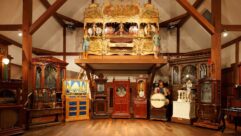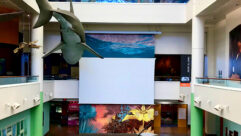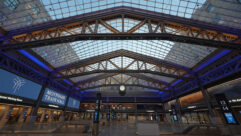The long-awaited reopening of the Houston Museum of Natural Science’s Hall of Ancient Egypt took place on November 20, and it truly is a renovation fit for a Pharaoh. The completely re-imagined 12,500-square-foot space opened with the world premiere of a special exhibition entitled “Ramses the Great and the Gold of the Pharaohs,” offering an immersive experience like none other outside of Egypt itself.
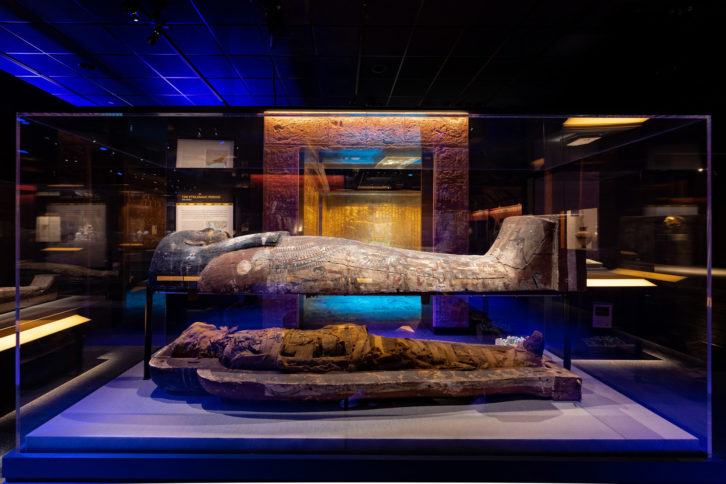
This historic permanent exhibit, allows museumgoers to step back in time, walking through eight rooms beautifully styled to convey various aspects of Egyptian life, such as fashion, religious devotion, and mummification and burial. Filled with 92 cases of objects and artifacts, this playground for the senses is adorned with colors, textures, and countless other picture-perfect visual takeaways. And those stunning visual elements are highlighted by nearly 350 elektraLite Stingray Mini 20-watt LED fixtures, specified by Philadelphia-based Christensen Lighting and supplied by Daniel Yochim of MainStage Theatrical Supply’s Lacombe, Louisiana branch.
“This is a low-ceiling type of project that required DMX control, meaning I could dim the lighting, and I had been in search of a low-profile, small-frame DMX projector fixture for years,” explains Donald Christensen, President and Lighting Designer at Christensen Lighting, whose portfolio includes the Yale Peabody Museum of Natural History’s David Friend Hall and the New York Aquarium. “I literally just bumped into the elektraLite Stingray Mini fixture online, looked at the specifications, and was shocked: not only did it have DMX control, but it was cool- and white-adjustable, capable of ‘tunable white,’ which is the current buzzword in the industry. It has one channel of cool light and one channel of warm white light, meaning we could mix color temperatures.”

Christensen notes that the main task for these fixtures on this project was lighting open-top glass cases with artifacts in them. “These typically would have at least two lights on each case from different angles and, with the Stingray Mini, we could adjust the color temperature from each side to mold and sculpt the artifacts,” he says. “Additionally, because it’s dimming with DMX, we’re not changing the color temperature by dimming, so we could meet the strict foot-candle requirements. A lot of these artifacts are light-sensitive—either papier–mâché or plaster or wood objects with paint on them, and range anywhere from 3,000 to 5,000 years old. So we had to get into the 5- to 15-to-20-foot-candle range, so being able to dim them was fantastic. The Stingray Mini let us do all that.”
“It also gave us the ability to shift the color, because some artifacts look better with a little bit of blue light, some look a little better with a little warm light, and some look better with a mix, and the Stingray Mini gave us that variety,” Christensen continues. “Another thing we use the fixture for is environmental theatrical lighting—we use them to project textures on the floors and some of the walls to create ambience, so the space doesn’t look dark when you’re walking through the experience. So there’s a large part of the space that has a blanket of about 50 of the Stingray Mini fixtures that are doing nothing but texture on the floor, and it looks fantastic.”
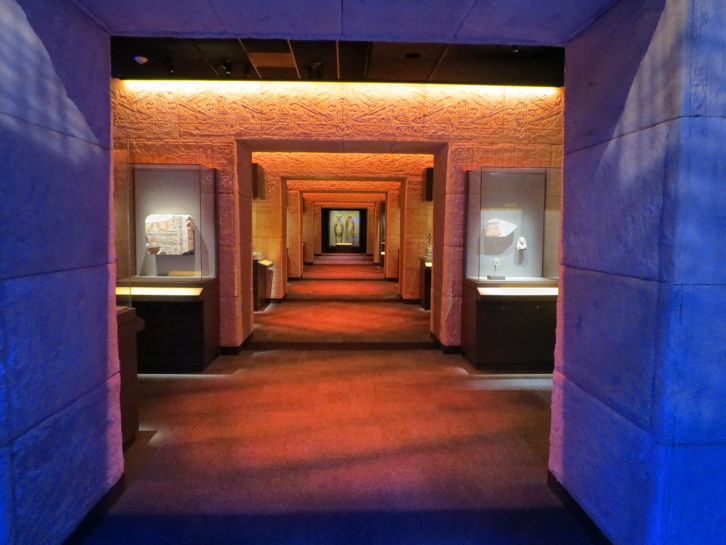
Dustin Newcomb, HMNS’s Director of Exhibits, recalls the Hall of Ancient Egypt space as “dark, monolithic, and not a lot of color” prior to the recent renovation. “With the new renovation we wanted to really use light constructively, as part of the education process. We wanted first to create a very environmental space as well as to light the objects in the cases,” he explains. “So we took a very layered lighting approach to the lighting, adding in a lot of thematic colors and textures for dramatic effect. We also used variable light levels and temperatures. The elektraLite Stingray Mini fixtures were perfect for accomplishing all of that. They make the objects pop and shine.”
Christensen adds that the case lighting was controlled via a custom-programmed iPad web app, so that the lighting designers can stand in front of each case with the curators and adjust the lighting precisely, on the fly. “That was another great thing about having the Stingrays be on DMX,” he says. “I love the product, and I love how elektraLite put these fixtures on an airplane to get them here in time. They were transparent with us during this whole pandemic and shipping crisis. It was tight, but we got the fixtures in time and everyone is very, very pleased.”
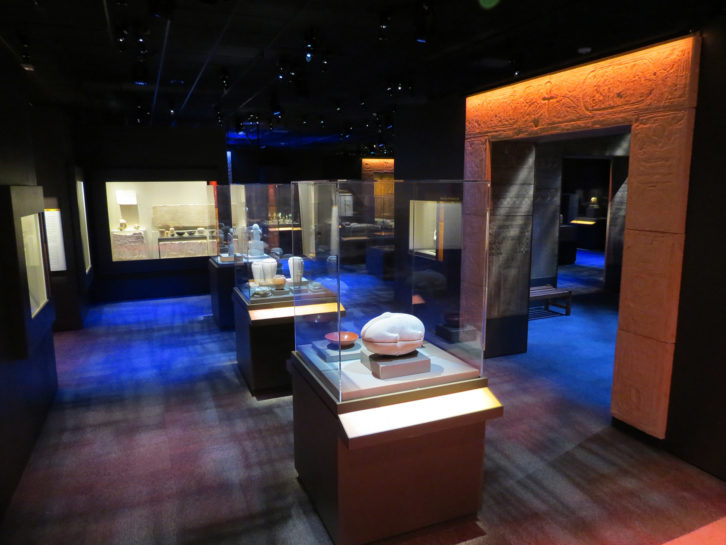
For more info on Houston Museum of Natural Science’s Hall of Ancient Egypt exhibit, visit www.hmns.org. Christensen Lighting can be found at www.christensenlighting.com.
All photos courtesy of Houston Museum of Natural Science



